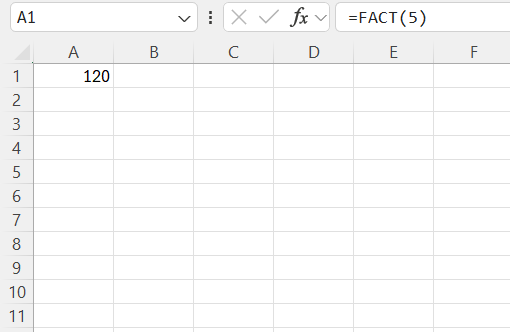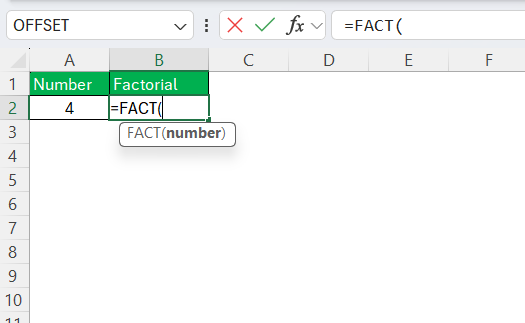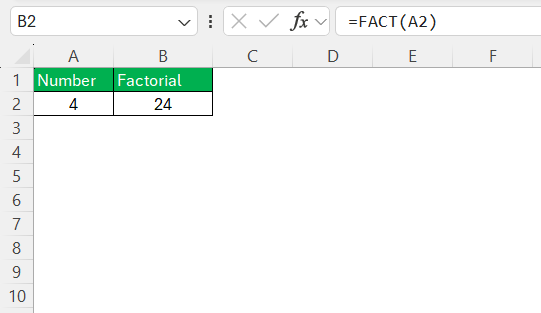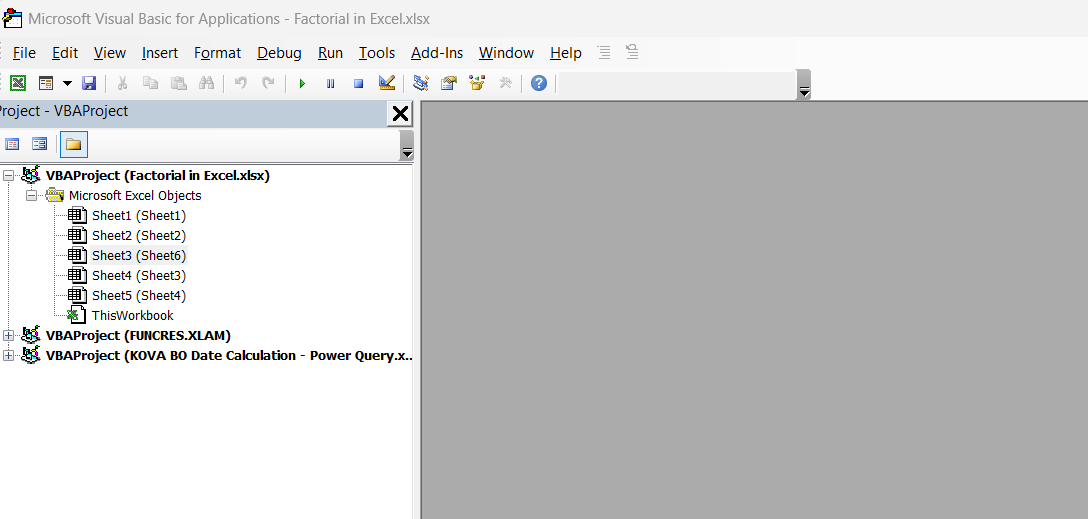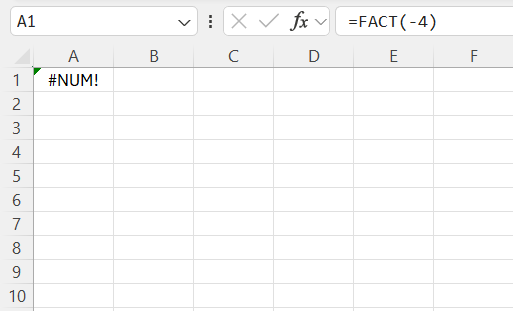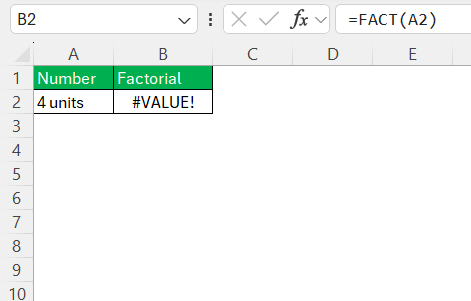Calculating factorials in Excel can significantly streamline complex mathematical tasks. Whether you’re a student or a professional, mastering the use of factorials through Excel will save time and enhance precision. This guide provides you with detailed procedures and tips to efficiently compute factorials, ensuring you make the most of Excel’s capabilities for your analytical needs.
Key Takeaways:
- Factorials are essential in permutations, combinations, and probability calculations.
- Excel’s FACT function quickly computes factorials for non-negative integers.
- Alternative methods like PRODUCT and VBA provide flexibility for custom calculations.
- Common errors include #NUM! for negative values and #VALUE! for non-numeric inputs.
- Understanding factorials enhances Excel’s utility in data analysis and decision-making.
Table of Contents
Understanding Factorials
What is a Factorial?
A factorial is a mathematical function that multiplies a series of descending natural numbers down to one. It’s denoted by an exclamation mark (!). For instance, if you see 5!, it represents the product of 5 x 4 x 3 x 2 x 1, which equals 120. Factorials play a critical role in permutations and combinations, helping determine the number of possible arrangements of a set of items.
They are foundational in various mathematical and statistical applications, providing solutions to problems involving sequences and arrangements.
Applications of Factorials in Real Life
Factorials are widely applied in everyday scenarios and various professional fields. In statistics, they help calculate permutations and combinations, essential when determining possible outcomes or arrangements, such as organizing tournament brackets. In probability, factorials assist in calculating likelihoods within a set of potential events.
Engineering and computer science often use factorials in algorithms, particularly in recursive function development. Additionally, project management can utilize factorials to identify task sequences and optimize workflows. These diverse applications underscore the practicality of factorials in both theoretical and practical contexts.
The FACT Function in Excel
Syntax and Functionality
The FACT function in Excel is designed to calculate the factorial of a given non-negative integer. Its syntax is straightforward:
=FACT(number)
Where “number” is the non-negative integer for which you want the factorial. When you use the FACT function, make sure the input is an integer, as Excel doesn’t support factorial calculations for non-integers. The function will quickly return the factorial result, efficiently handling computations that might otherwise be cumbersome manually.
This simplicity and speed make the FACT function particularly useful in scenarios that involve combinatorics, probability, and decision analysis in Excel.
Step-by-Step Guide to Calculating Factorials in Excel
Using the FACT function for basic calculations in Excel is a straightforward process that allows you to quickly compute the factorial of integers. To begin, identify the cell where you want the factorial result to appear.
STEP 1: Click into this cell, type an equal sign (=) followed by FACT, and then open a parenthesis.
STEP 2: Enter the integer directly or reference the cell containing the integer for which you need the factorial, close the parenthesis.
STEP 3: Press Enter.
For example, if you want to calculate the factorial of 4, you would enter =FACT(4) or if cell A2 contains the number 4, use =FACT(A2). By using this method, Excel will deliver the factorial of the number instantly. This approach is perfect for quick calculations, providing you with rapid results for both small and moderately large integers. Consider this method whenever you need a quick, accurate result without extensive setup.
Alternative Methods for Factorial Calculations
Manual Formula Approach
The manual formula approach for calculating factorials offers flexibility when Excel’s built-in functions are not sufficient, such as when customizing calculations or working within specific constraints. To manually calculate a factorial in Excel without using the FACT function, you need to set up a formula that iteratively multiplies descending integers.
For example, to calculate 6! manually, you can use a combination of the PRODUCT, ROW and INDIRECT functions. Enter =PRODUCT(ROW(INDIRECT("1:"&A1))) in a cell, where A1 contains the number 6.
This formula constructs a range from 1 to the specified number and calculates the product, thereby returning the factorial.
This approach is versatile, allowing you to incorporate additional logic and customize calculations beyond standard integer factorials. Although it might require more steps than using the FACT function, the manual formula method gives users control and adaptability, particularly in more complex or non-standard factorial scenarios.
Utilizing VBA for Automating Calculations
If you’re tackling repetitive or large-scale factorial calculations in Excel, VBA (Visual Basic for Applications) can be a game-changer. VBA allows you to write custom functions that automate tasks, saving both time and minimizing human error.
Here’s a step-by-step guide to creating a custom factorial function using VBA:
STEP 1: Press ALT + F11 in Excel to open the VBA editor, where you can write your custom code.
STEP 2: In the editor, click on Insert and then choose Module.
STEP 3: Copy and paste the following code into the module:
Function Factorial(n As Integer) As Double If n = 0 Or n = 1 Then Factorial = 1 Else Factorial = n * Factorial(n - 1) End If End Function
This code defines a recursive function that calculates the factorial by calling itself within the VBA environment.
STEP 4: Once you close the VBA editor, your custom function can be used directly in Excel, just like any other function. For example,you would call it within a cell by typing =Factorial(X), where X is the integer you wish to compute the factorial for.
By leveraging VBA, you can automate repetitive factorial calculations across extensive datasets efficiently. This method not only saves time but also minimizes potential errors associated with manual inputs or complex formula combinations. Plus, once mastered, VBA expands your toolkit beyond factorials, enabling a host of other custom solutions tailor-fit to your precise data analysis needs.
Common Errors and How to Fix Them
Even the best of us run into issues from time to time. When working with factorials in Excel, there are a few common hiccups you might encounter. Let’s go over some of them and how to troubleshoot.
- #NUM! Error: This error occurs when you try to calculate the factorial of a negative number. Remember, factorials are only defined for non-negative integers.
- #VALUE! Error: This happens if the formula contains non-numeric data. Ensure that the cell references or numbers you provide are valid.
- Incorrect Results: This could be due to referencing the wrong cell or having a typo in the formula. Double-check your formulas and cell references to ensure accuracy.
By being aware of these common pitfalls, you can save time and frustration, ensuring your calculations are error-free. And if you do run into issues, remember—Excel’s help functions and communities can often provide quick solutions!
FAQs
How do you use the factorial formula?
To use the factorial formula, multiply the number by each positive integer below it down to one. For example, to find 5!, compute 5 × 4 × 3 × 2 × 1, which equals 120. In Excel, use the FACT function as a shortcut: enter =FACT(5) to instantly get 120. This method efficiently handles factorials for various applications.
What is the difference between FACT() and FACTDOUBLE()?
The FACT() function in Excel calculates the standard factorial of a number, multiplying the number by each integer below it down to one. In contrast, FACTDOUBLE() computes the double factorial, multiplying the number by every second integer down to one or two, depending on whether the number is odd or even.
Can I calculate factorials for non-integers in Excel?
No, Excel’s FACT function only works with non-negative integers. If you attempt to calculate a factorial for non-integers, you’ll encounter an error. Factorials are mathematically undefined for non-integers, so ensure your inputs are whole numbers.
How do factorial errors typically occur in Excel?
Factorial errors in Excel typically occur due to using negative numbers, non-integer values, or overly large numbers that exceed Excel’s computational limits. The #NUM! error appears for negative or overly large values, while non-numeric data causes a #VALUE! error. Always ensure inputs are valid non-negative integers within Excel’s permissible range.
What is the mod function in Excel?
The MOD function in Excel returns the remainder of a division operation. It is particularly useful for identifying whether a number is evenly divisible by another. The syntax is =MOD(number, divisor). For example, =MOD(10, 3) returns 1, as 10 divided by 3 has a remainder of 1. This function is often used in scheduling, pattern recognition, and conditional formatting.
John Michaloudis is a former accountant and finance analyst at General Electric, a Microsoft MVP since 2020, an Amazon #1 bestselling author of 4 Microsoft Excel books and teacher of Microsoft Excel & Office over at his flagship MyExcelOnline Academy Online Course.

